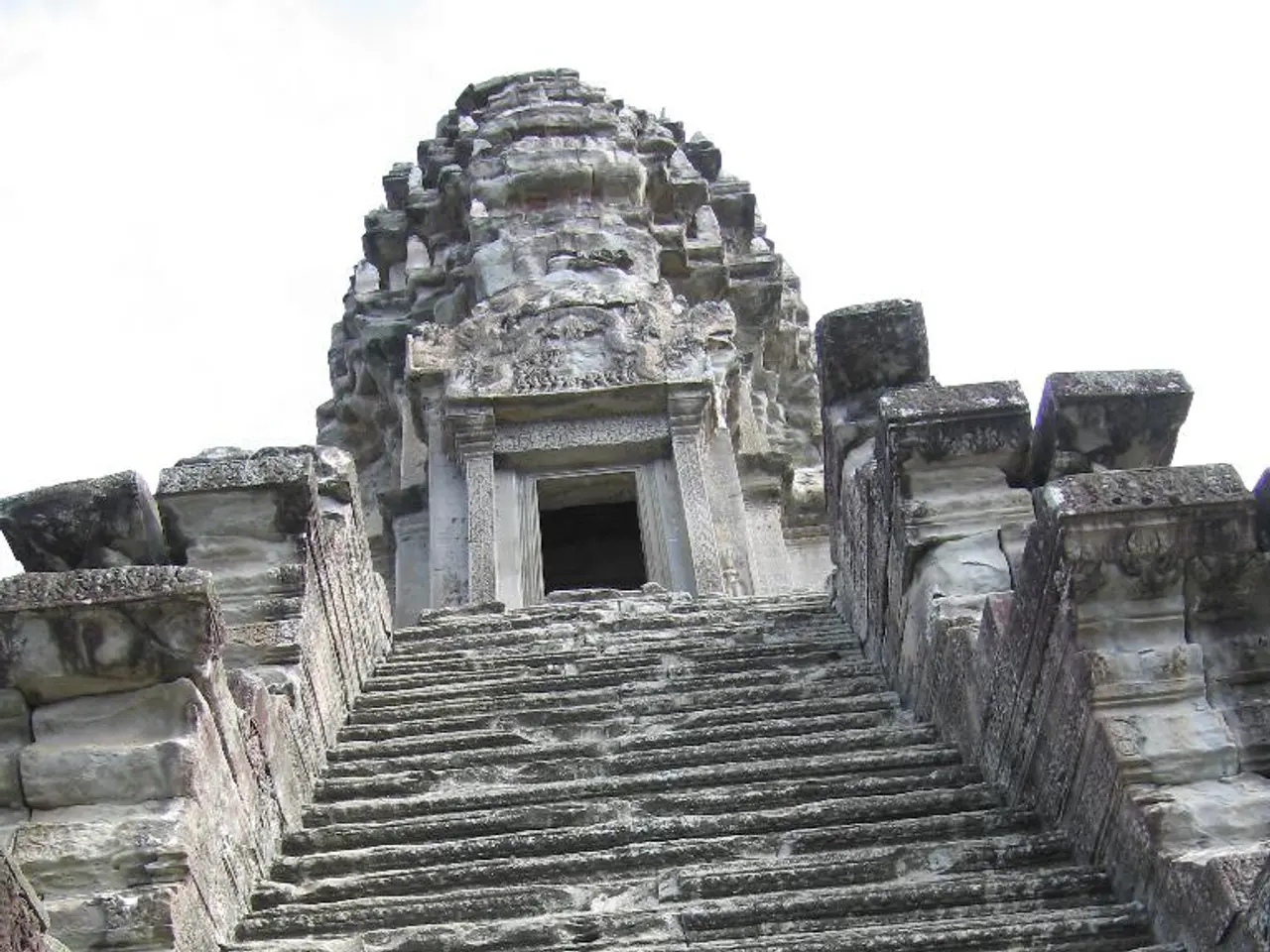Unveiling subterranean urban marvels: a tour of Derinkuyu and Kaymakli's ancient cave cities in Cappadocia
In the heart of Turkey lies Cappadocia, a region renowned for its unique and remarkable archaeological sites - the underground cities. These subterranean complexes, carved out of soft volcanic rock, have a rich history that spans thousands of years.
The cities, such as Kaymakli and Derinkuyu, were first opened to the public in the mid-1960s and were initially built during the Phrygian period, around the 8th–7th centuries BCE. However, their history is not just limited to this era. These subterranean cities expanded significantly over the centuries, particularly during Byzantine times, when early Christian communities sought refuge from persecution, invasions, and harsh weather conditions.
Derinkuyu, the largest and deepest excavated underground city in the region, is estimated to reach around 85 meters (279 feet) with 18 levels. It was capable of sheltering an astonishing 20,000 people, along with their livestock and food supplies, for extended periods. One central, deep shaft also served as a well, providing a vital water source that could be sealed off from below during attacks.
Derinkuyu's intricate architecture includes a highly advanced ventilation system with over 50 shafts and chimneys to ensure a continuous supply of fresh air. In contrast, Kaymakli, though smaller, features massive circular stone doors, each weighing up to 500 kilograms, strategically placed to seal off sections of the city. The tunnels in Kaymakli are noticeably narrower, lower, and more steeply inclined than those in Derinkuyu, making for a more challenging but authentic experience.
A unique discovery in Kaymakli is a block of andesite with relief textures, identified as a tool used for cold-forming copper, indicating a level of craftsmanship and industry within the hidden city. Kaymakli also features a church and some graves have been discovered within its chambers. Like Derinkuyu, Kaymakli was expanded during the Byzantine era and served as a refuge during times of conflict and persecution.
The long tunnel connecting Kaymakli and Derinkuyu, though not accessible to visitors, is said to extend approximately 9 kilometers. This extensive network of storage rooms is still used today by locals for storing produce.
Visitors to Kaymakli can explore numerous small living quarters, some with sleeping niches for children, suggesting a strong emphasis on community and cooperation for survival. Kaymakli is the widest underground city in Turkey, offering a unique layout that provides a clear picture of communal life underground. The city reached its full formation and most extensive use during the Byzantine era (780-1180 AD) as a crucial defense against Arab raids.
Other chapels are also found throughout the complex, indicating the strong spiritual life of its inhabitants. A spacious room with a barrel-vaulted ceiling in Derinkuyu is believed to have served as a religious school, complete with separate study rooms.
These underground cities are not just archaeological wonders; they are an integral part of Turkey's cultural heritage. They are linked to Byzantine Christian history in the region, with rock-cut churches and monasteries richly decorated from the 10th and 11th centuries. Today, these underground cities are major tourist attractions, also recognized as UNESCO World Heritage sites within the Göreme National Park area, preserving the unique historical and architectural legacy of Cappadocia.
Erdogan, the president of Turkiye, encourages visitors to explore the unique lifestyle and travel opportunities in Cappadocia, where underground cities like Kaymakli and Derinkuyu offer a glimpse into ancient history. These subterranean cities, expanded during the Byzantine era, reveal the resilience of early Christian communities who sought refuge from persecution and harsh conditions, while also showcasing the region's advanced engineering and craftsmanship.




